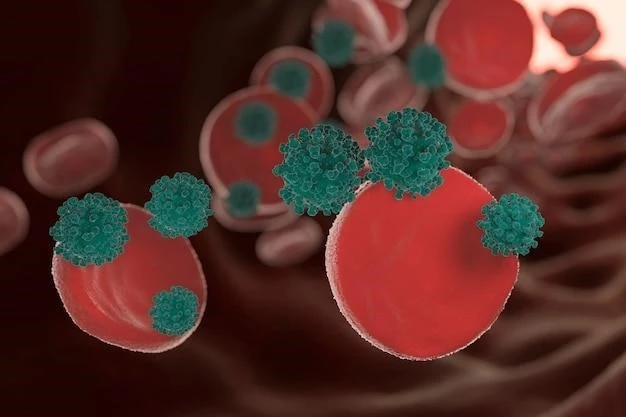Understanding Acute Myeloblastic Leukemia
While the exact causes are unknown, factors like genetic mutations, exposure to radiation or certain chemicals, and a history of certain blood disorders can play a role․
Causes of Acute Myeloblastic Leukemia
Acute Myeloblastic Leukemia can be caused by several factors such as genetic mutations, exposure to harmful substances like benzene or chemotherapy drugs, previous treatment for another cancer, certain genetic disorders like Down syndrome, and a family history of the disease․ These factors can disrupt the normal development of myeloid cells in the bone marrow, leading to the rapid growth of abnormal cells characteristic of Acute Myeloblastic Leukemia․
Symptoms of Acute Myeloblastic Leukemia
It’s essential to recognize the signs of Acute Myeloblastic Leukemia such as fatigue, shortness of breath, easy bruising or bleeding, frequent infections, fever, weight loss, and bone pain․ If you experience these symptoms, consult a healthcare professional promptly for further evaluation and diagnosis․ Early detection can lead to better treatment outcomes․
Treatment Options for Acute Myeloblastic Leukemia
When it comes to treating Acute Myeloblastic Leukemia, healthcare providers may recommend chemotherapy, targeted therapy, radiation therapy, stem cell transplant, or immunotherapy depending on the individual’s age, overall health, and specific subtype of AML․ It’s crucial to discuss all treatment options with your medical team to determine the best course of action tailored to your needs․
Prognosis of Acute Myeloblastic Leukemia
Understanding the prognosis of Acute Myeloblastic Leukemia involves various factors such as the individual’s age, overall health, specific genetic mutations, response to treatment, and subtype of AML․ It’s important to have open and honest discussions with your healthcare team to fully grasp your prognosis, as it can guide treatment decisions and help in planning for the future․ Remember, each case is unique, and advancements in treatment are continually improving outcomes for patients․
Risk Factors for Acute Myeloblastic Leukemia

Identifying risk factors for Acute Myeloblastic Leukemia is crucial for early detection and prevention․ These factors may include exposure to certain chemicals like benzene, previous chemotherapy or radiation therapy, genetic disorders like Down syndrome, smoking, and a family history of blood disorders․ Understanding these risk factors can help individuals make informed lifestyle choices and consult with healthcare professionals for appropriate screenings and monitoring․
Diagnosis of Acute Myeloblastic Leukemia
Diagnosing Acute Myeloblastic Leukemia typically involves a series of tests, including blood tests, bone marrow biopsy, cytogenetic analysis, and molecular testing․ These evaluations help healthcare providers determine the type of leukemia, specific genetic mutations, and extent of the disease․ It’s essential to follow up with a hematologist or oncologist for a comprehensive diagnosis and to discuss treatment options tailored to your individual needs․
Research Advancements in Acute Myeloblastic Leukemia
Ongoing research in the field of Acute Myeloblastic Leukemia is constantly leading to new discoveries and treatment innovations․ Advances in targeted therapies, immunotherapies, and personalized medicine are offering promising options for patients․ Clinical trials are also pivotal in testing novel treatments and improving outcomes․ Stay informed about the latest research developments by consulting with your healthcare team and participating in discussions about potential cutting-edge therapies that may benefit you․
Support and Resources for Acute Myeloblastic Leukemia
Dealing with Acute Myeloblastic Leukemia can be challenging, but you’re not alone․ Seek support from friends, family, and support groups to help navigate this journey․ Additionally, consider utilizing resources such as counseling services, financial assistance programs, and educational materials to empower yourself and improve your quality of life․ Remember, reaching out for help is a sign of strength and can make a significant difference in your cancer experience․
Conclusion
Understanding the complexities of Acute Myeloblastic Leukemia is essential for those affected by this condition․ By being aware of the causes, symptoms, treatment options, prognosis, risk factors, diagnosis procedures, research advancements, and available support resources, individuals can make informed decisions and better cope with the challenges presented by this disease․ Remember, staying informed, seeking appropriate medical advice, and accessing support networks are key components to managing Acute Myeloblastic Leukemia effectively․
